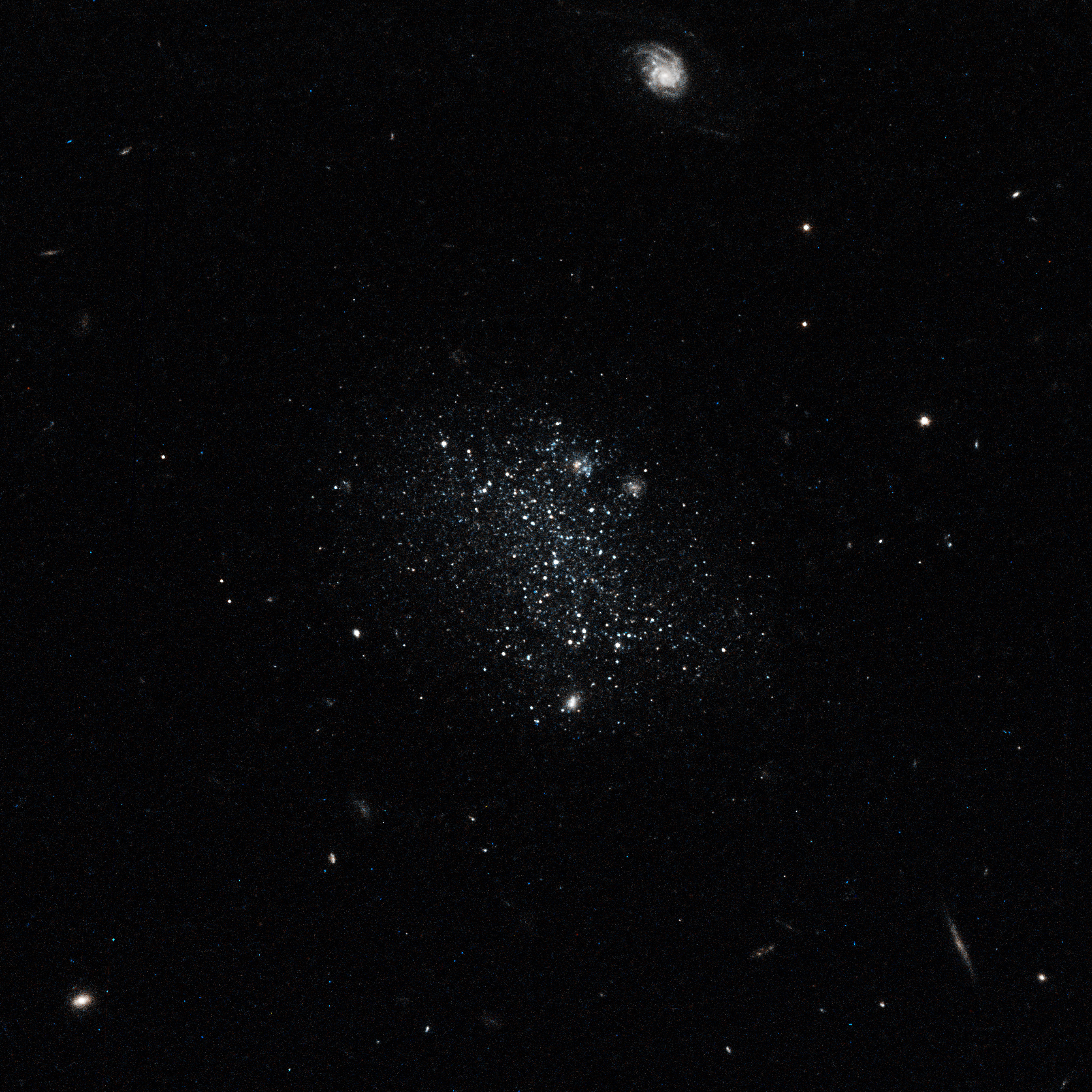Dwarf Galaxies Escape Intergalactic Void to Join 'Big City'

After spending most of their lifetimes stuck inside a cosmic wilderness, two dwarf galaxies have apparently made the leap to join a nearby group of galaxies in a star-formation party.
The two galaxies — named Pisces A and Pisces B — were stranded in the intergalactic void, or vast empty space, without the dust and gas necessary to build stars. But with gravity pulling them toward the galactic "big city" (as NASA officials described it), the two dwarf galaxies have kicked off a blaze of new star birth, researchers said in a new study describing the findings.
Astronomers using the Hubble Space Telescope spotted Pisces A and Pisces B at the boundary of the Local Void, an empty chunk of space about 150 million light-years across. This void sits just outside the Local Group, where dozens of galaxies — including the Milky Way — reside.
Billions of years ago, tiny dwarf galaxies like the Pisces pair combined to create the large spiral and elliptical galaxies seen today. But while the dwarf galaxies neighboring Pisces A and Pisces B mingled and merged, these two loner galaxies initially skipped out on the galactic party.
"These Hubble images may be snapshots of what present-day dwarf galaxies may have been like at earlier epochs," lead researcher Erik Tollerud, of the Space Telescope Science Institute (STScI) in Baltimore, said in a statement. "Studying these and other similar galaxies can provide further clues to dwarf galaxy formation and evolution."
Because of their small size and dim glow, dwarf galaxies can be difficult to find. The Hubble telescope has the sharp vision needed to study these faint galaxies. Using the telescope, astronomers determined the distances from Earth to Pisces A and Pisces B to be about 19 million and 30 million light-years, respectively. This allowed researchers to figure out these galaxies' locations at the boundary of the Local Void.
Another piece of evidence of the galaxies' void address is their hydrogen content relative to that of similar galaxies, Tollerud said. "In the past, galaxies contained higher concentrations of hydrogen, the fuel needed to make stars," he said. "But these galaxies seem to retain that more primitive composition, rather than the enriched composition of contemporary galaxies, due to a less vigorous history of star formation."
Breaking space news, the latest updates on rocket launches, skywatching events and more!
The new Hubble observations also allowed the researchers to focus on individual stars and estimate their ages.
Both dwarf galaxies contain around 20 to 30 young, bright-blue stars. Tollerud explained that the void environment in which Pisces A and Pisces B resided would have slowed their evolution by preventing new stars from forming. But as the dwarf galaxies migrated toward the more populated Local Group, they kicked off a firestorm of new star birth.
Tollerud and his team of researchers from Yale University, Colombia University, the University of Washington and the American Museum of Natural History published their results Aug. 11 in The Astrophysical Journal.
The Hubble Space Telescope is a joint mission by NASA and the European Space Agency that launched in 1990.
Email Hanneke Weitering at hweitering@space.com or follow her @hannekescience. Follow us @Spacedotcom, Facebook and Google+. Original article on Space.com.
Join our Space Forums to keep talking space on the latest missions, night sky and more! And if you have a news tip, correction or comment, let us know at: community@space.com.

Hanneke Weitering is a multimedia journalist in the Pacific Northwest reporting on the future of aviation at FutureFlight.aero and Aviation International News and was previously the Editor for Spaceflight and Astronomy news here at Space.com. As an editor with over 10 years of experience in science journalism she has previously written for Scholastic Classroom Magazines, MedPage Today and The Joint Institute for Computational Sciences at Oak Ridge National Laboratory. After studying physics at the University of Tennessee in her hometown of Knoxville, she earned her graduate degree in Science, Health and Environmental Reporting (SHERP) from New York University. Hanneke joined the Space.com team in 2016 as a staff writer and producer, covering topics including spaceflight and astronomy. She currently lives in Seattle, home of the Space Needle, with her cat and two snakes. In her spare time, Hanneke enjoys exploring the Rocky Mountains, basking in nature and looking for dark skies to gaze at the cosmos.


